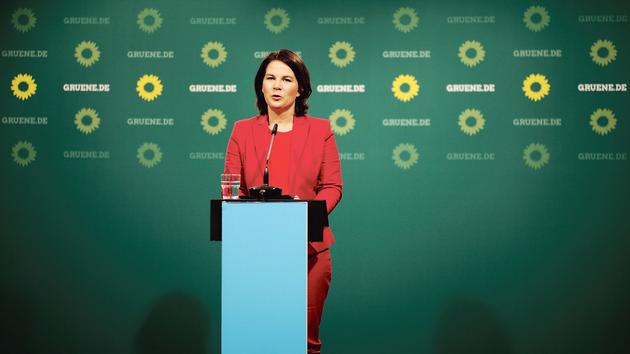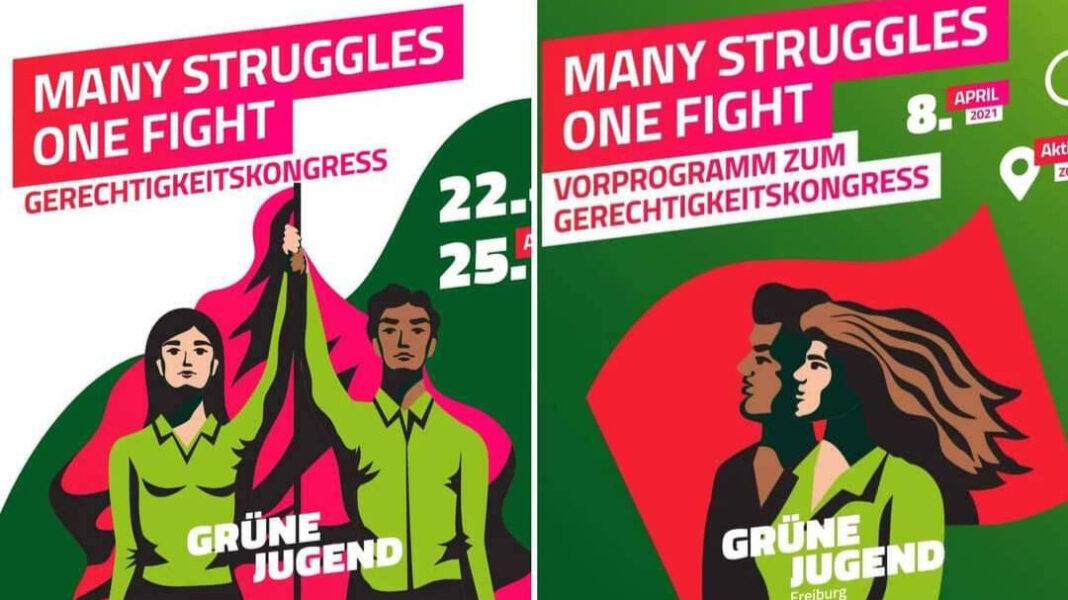By Álvaro Peñas
Political environmental protection was often used as a camouflage, as an acceptable banner hiding ideas that had very little to do with environmental protection and were certainly much less acceptable. During the Cold War, when the USSR and communist countries polluted the environment everywhere and carried out all kinds of nuclear tests, the western communist parties embraced radical environmental protection and pacifism and denounced the destruction of the planet inherent in the capitalist system. They were the so-called watermelon environmentalists: green on the outside, red on the inside. In West Germany, the cradle of the most important green party in Europe, the GDR secret police Stasi successfully infiltrated the green movement. The most notorious case was that of Dirk Schneider, spokesman for the green parliamentary group, who headed a party delegation to the GDR in 1983. Under his influence and that of other immigrants like him, the Greens positioned themselves for the GDR and against German reunification as a “threat to peace”. In October 1991, Schneider was denounced for having worked as a Stasi informant under the code name Ludwig for 10 years. In 2016, the Greens commissioned the historians Jens Gieseke and Andrea Bahr to study the presence of Stasi agents in their organization. According to the party, the twenty or so infiltrators did not achieve their goals, which in view of the attitude of the Greens to the GDR and the enormous programmatic agreement with Die Linke.
However, the Soviet or Stasi model does not sell very well in today’s world, but environmental protection does. According to the latest surveys, Bündnis 90 / Die Grünen and their candidate Annalena Baerbock are the leading party in Germany with 27-25% voting intent, between one and three points more than the conservatives of the CDU / CSU (24%), followed by the Social Democrats ( 13%), the liberals (12%), the patriots of the alternative for Germany (11%) and Die Linke (7%). These polls are very important because the Bundestag elections will take place in September next year. There are two reasons for the sudden growth of the greens. First, the weakness of Angela Merkel’s party, the CDU, with a major leadership crisis and littered with corruption cases. According to the polls, more than half of their 2017 voters will no longer support them in 2021, and 16% will vote for the Greens. Second, which is undoubtedly the main reason for this renewed sympathy among the population: the unbridled support of the German media for Baerbock, although it lacks experience outside of party politics. The media have not only praised the green candidate, but some, like the Tagesspiegel, have even pointed out that the German population may not be ready for someone of her format. although she lacks experience outside of party politics. The media have not only praised the green candidate, but some, like the Tagesspiegel, have even pointed out that the German population may not be ready for someone of her format. although she lacks experience outside of party politics. The media have not only praised the green candidate, but some, like the Tagesspiegel, have even pointed out that the German population may not be ready for someone of her format.
This media support makes sense if you look at green politics, which is one of the most important workhorses of the 2030 Agenda and globalism. We just have to look at how the UN and other international institutions have turned to phenomena like “Fridays for Future” and their prophet Greta Thunberg. Under the pretext of ecology, laws on climate change are being passed, as has just happened in Spain and France, which will lead to unemployment, tax increases, de-industrialization and the loss of our energy independence, or, what is the same, the loss of national sovereignty, which is the main objective of the is globalist politics. But that’s not the only point where the green agenda and the globalist agenda, who otherwise share all the mantras of progressivism and diversity, agree; both work together in favor of mass immigration.

The German Greens, as well as the mainstream media, seem unaware of all the integration and economic problems (according to the government, the cost to Germany in 2018 was € 23 billion) caused by the mass influx of migrants in 2015. But for Baerbock, who is demanding even more migrant contingents for Germany, this is a minor matter: “We urgently need additional contingents. Dozens of (German) municipalities are ready. ”And the same applies to Europe:“ Refugee contingents should be distributed in the EU as quickly as possible so that asylum procedures can be carried out there. ”Other members of her party have made similar statements. Michael Kellner, Federal Political Director, wrote on Twitter: “If the EU wants to remain committed to the European idea, then solidarity is required. The refugees on the Greek islands have to be evacuated. Germany should lead the way and also take in refugees at the European external borders. ”The Green Youth went one step further and called for EU funds to be used for ferries to transport migrants from Africa instead of spending them on a border protection agency like Frontex. In addition to this pro-immigration zeal, the Greens add their climate hysteria and in 2020 drafted a proposal according to which Germany should take in 150 million climate refugees in the future. A demand in which they agree with Fridays for Future: “The European approach in Greece is inhuman. In one world.
In Europe, the Greens are following the same trend as their German supporters and led a campaign in the European Parliament under the title “Europe welcomes you”, in which they pointed out more than 500 cities and municipalities that are ready to accept more migrants. Another country with a strong green presence is Sweden, where the Greens are part of the government. Her spokeswoman and current Minister for Equality and Housing, Märta Stenevi, made a controversial statement on April 1, in which she said that white, native-born Swedes should step aside so that women from foreign minorities could rule Sweden. It seems that she does not count herself among the white Swedes, even though she is; however, she has not yet resigned from her position. With all this endophobic rhetoric that is so typical of the left, another Swede has to be mentioned, Lars Ahlfors, chairman of the Greens in Eslöv, a town of 20,000 in southern Sweden, who said that if Swedes do not embrace multiculturalism, then Swedes will not like to leave him. The party later apologized, claiming it was an “ironic” statement. In Spain, the representative of the green line is EQUO, a party founded in 2011 that ran in coalition with Izquierda Unida and Podemos in various elections, but left the purple coalition in 2019 to join the party of Iñigo Errejón, Más Madrid, and Compromis to join. After their good results in the municipal elections of Madrid, Más Madrid wants to take up the gauntlet of the German model and lead a “green wave”. A perfect camouflage and clever strategy for the same ideals that Podemos stagnates on, but painted green and maybe less scary. Watermelon environmental protection has not ceased to exist, it has simply adapted to the times and does not want to lead us to the dictatorship of the proletariat, but to the dictatorship of the elites.
Source: UME

